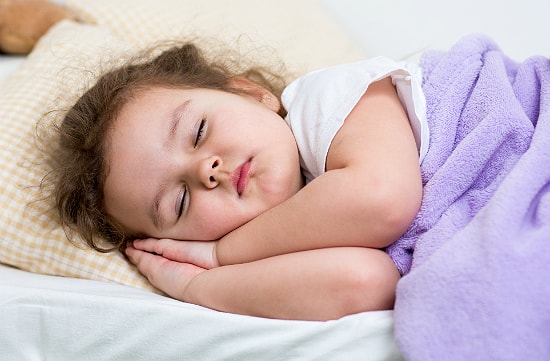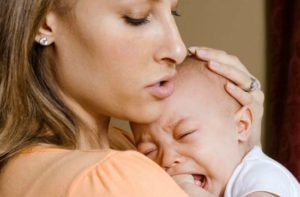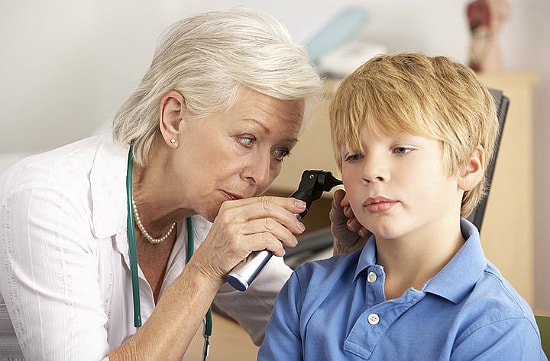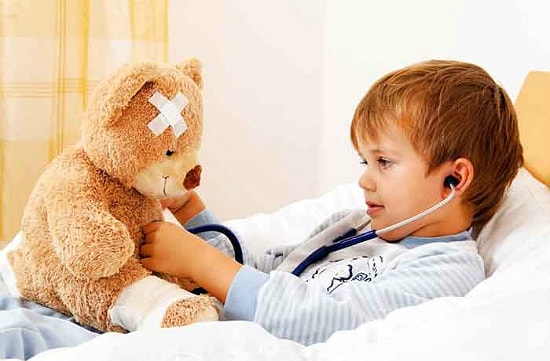Excessive activity and mobility, lack of fear and a sense of self-preservation often lead to injury and become the reason why a concussion of the brain can occur in children, regardless of age. Sometimes, even the most vigilant and attentive parents do not have time to keep track of a baby who is trying to get to know the world around him. Often there is a concussion of the brain in a schoolchildren who has no idea about the consequences and complications of craniocerebral disorders. To do with a simple bruise, bump or hematoma, in this case, will not work, and the treatment will include mandatory hospitalization.
But, the external manifestation of skin lesions is not so much dangerous as a closed craniocerebral injury or concussion in children with subsequent disruption of the central nervous system and organ at the internal cellular level. Even a severe head injury requires immediate medical examination in order to exclude intracranial changes.
A child who has received a mild concussion of the 1st degree has weakness, slight dizziness, and gagging is possible. Consciousness is present. After 20-30 minutes, children return to their usual activities and games.
Grade II or concussion in children of moderate severity. At this stage, there are minor damage to the structure of the skull, hematomas and soft tissue bruises. The victim may lose consciousness in the first minutes, be disoriented in space, and feel nausea and bouts of repeated vomiting for several more hours.
Severe or III degree. It is accompanied by injuries, fractures, severe bruises, hemorrhages, prolonged and frequent loss of consciousness. Compulsory hospitalization, rest, round-the-clock supervision of doctors and intensive treatment for more than 2 weeks.
Over 1230 young patients in Russia are annually diagnosed in neurosurgical departments with serious head injuries. If we rely on statistical data, most often the meninges and skull in children under one and 4-6 years old suffer - more than 21%, among schoolchildren these data exceed 45% of the total number of all cases. In infants and newborns, the rates reach 2%, and in toddlers - 8%.
Signs of a concussion in a baby

Careless clumsy parents are the cause of craniocerebral injuries in newborns. The fall of the child from the changing table, bed and from the hands of mom and dad is recorded quite often. Mild and minor symptoms of a concussion of the brain in children under one year old complicate the identification of damage very much:
- frequent regurgitation;
- lack of appetite;
- an increase in the fontanelle;
- pale complexion;
- restless sleep;
- nervousness and crying.
But, thanks to the still undeveloped brain and skeletal system, such injuries rarely lead to serious consequences. Symptoms that resolve quickly and are not treated. The prognosis of a quick recovery is justified in 90% of cases.
Concussion in a child 2-3 years old

The ability to express one's feelings and the presence of speech skills contributes to the early identification of craniocerebral injuries. Experienced and attentive parents may observe abnormal behavior and signs of concussion in a child under 3 years old.
A noticeable change in the color of the baby's skin should be alerted: a pale or whitish shade. A sudden loss of reference in space, staggering gait and loss of consciousness. Pain in the navel and abdomen, gag reflex. Children complain of squeezing pains in the temple area and migraines, sleep poorly and cannot concentrate on objects, lose activity and interest in outdoor games.
How to identify a concussion in a child aged 3 to 6

Places with a large concentration of children, such as preschool institutions, playgrounds, parks, become dangerous if there is insufficient attention to the child. Traumatism annually in children under 6 years of age grows by 2% or more. The reasons for the concussion to follow are poor upbringing and the manifestation of aggression in the child, symptoms of increased excitability and uncontrolled behavior.
The baby fell or was pushed, hit with a heavy toy or a stone on the head, a bump or hematoma, a bruise appeared - immediately contact the nearest medical aid center for diagnosis and examination.
What do doctors pay attention to to determine a concussion in young children, what are the main symptoms of this: excessive sweating, severe pain and dizziness, a feeling of pressure, repeated vomiting, post-traumatic blindness is possible. Very often, the child cannot reproduce the situation when an injury was received or a fall occurred.
Concussion in a schoolboy

Dysfunctional families, social and material inequality, which occurs and is reflected, first of all, on children in educational institutions provokes fights as a way to prove their superiority over others or to assert themselves through strength. Unfortunately, signs and serious injuries, concussion and bruises of the brain are noted specifically in school-age children.
During this period, there are frequent cases of dangerous injuries and neurological manifestations, such as twitching of the eyeballs, nystagmus, Babinsky's reflex, in which the big toe is extended after physical impact on the foot, convulsions, loss of coordination of movements, consciousness may be absent for more than 15-20 minutes. The child is sick with profuse vomiting, partial memory loss, lack of concentration and concentration.
First aid for concussion

It is not necessary to start treatment on your own in case of a concussion in children, but each of the parents, educators, teachers and adults who are nearby should know what to do in such a situation at home or in an organization. The most important thing is to contact the emergency medical staff or take the child to the hospital.
Before providing qualified assistance, you must apply ice or a cold moistened towel to the injury site. The victim needs rest, but not sleep, so put the baby to bed and try to calm him down. Wounds can be treated with a painless disinfectant "Chlorhexidine", rinsed with running water.
Diagnosis of concussion in children

A more accurate examination will be carried out within the clinic and at an appointment with a traumatologist, neurologist, ophthalmologist and pediatrician. But, in order to start a full-fledged treatment of concussion in children, a preliminary diagnosis is prescribed, depending on the severity and age of the patient.
Neurosonography (NSG). A non-invasive method of visual examination of parts of the brain in infants using a two-dimensional ultrasound scan conducted through the fontanelle. Indications for the procedure: birth trauma, central nervous system disorders, congenital pathologies.
Electroencephalography (EEG). Prescribed by a pediatric neurologist to obtain a graphical recording of the electrical activity of brain cells taken from small electrodes attached to the surface of the child's head. At an early age, it is recommended to register the physiological and pathological processes during the baby's sleep. EEG allows to determine the severity of traumatic brain and birth trauma, signs of concussion, central nervous system damage and swelling.
Ultrasound echoencephalography. It makes it possible to obtain volumetric images of intracranial injuries, hematomas, abscesses, tumors and cerebral edema.
X-ray of the skull. Shows the condition, structure and thickness of bones, cranial sutures and fontanelles. It is widely used in pediatric traumatology, neurology and neurosurgery.
MRI of the brain in a child under one year old. A neuroimaging diagnostic method that allows you to identify concussion and damage to the nervous system in children, symptoms of anomalies and developmental pathologies, traumatic brain injuries and hemorrhages.
X-ray CT for children is performed under general anesthesia, it provides scanning of morphological changes in organs and tissues of the central nervous and skeletal systems. Safe procedure even for newborns.
Concussion treatment

After the initial examination by a traumatologist and neuropathologist, surgical treatment and stitching of damaged soft tissues, head wounds, pronounced symptoms of concussion, proven during diagnosis, require urgent treatment. Recovery after traumatic brain injury takes place with the appointment of drug treatment with vitamins, nootropics, diuretics, sedatives, antihistamines and pain relievers, drugs containing potassium.
"Diakarb". With vivid hypertension and epileptic activity against the background of TBI, it is used for children from 4 months. We are treated 1-2 times a day from 125 to 250 mg.
Diuretic drug "Hypothiazide" Recommended for gentle removal of excess fluid while retaining calcium necessary for the child's body. Prescribed from 2 months of a child's life at the rate of 1 mg for each kilogram of the baby's body weight.
Sedative "Reminil" after the first year of life, it enhances and facilitates the work of processes in the spinal cord and brain, increases and stimulates muscle tone, promotes the conduction of nerve impulses of the central nervous system. For children under 2 years old, the recommended dose is up to 1 mg orally, up to 5 years old - 5 mg, over 6 years old - 6.5 mg, from 8-9 years old - 7.5 mg.
"Asparkam". Restores in the body the content of potassium and magnesium necessary for conducting nerve impulses, regulates metabolic processes, narrows and expands the coronary arteries, depending on the dosage. The amount of active ingredient per day is from 2 pills.
Fenkarol. Antiallergic agent, which has a positive effect on the permeability of the vessels of the brain, is prescribed for children of any age. Reception per day - 2-3 times. From 3 years of age, the dosage is 5 mg, up to 6-7 years - 10 mg, up to 12 years of age the amount of the drug increases to 15 mg. Teenagers are advised to use 25 mg each.
After one year, the baby can take the antiemetic "Dramina". It has a calming and analgesic effect, eliminates vestibular disorders. It is prescribed in a daily dosage of 12.5 mg. Reception should not exceed 3 times a day.
The terms of hospitalization and finding the victim under the supervision of medical personnel and doctors depends on the severity of the injuries received. An approximate treatment for a mild concussion will take about a week. The improvement in the condition reduces the hospital stay to 3-4 days. Moderate severity provides for up to 2 weeks within a medical facility. Complex craniocerebral injuries with numerous bruises and fractures are treated until recovery takes about a month or more.
Consequences of a concussion

As a result of injuries and bruises, fractures and tumors to avoid complications. After suffering damage to the skull or brain, disorders of the central nervous and skeletal system in severe form, meteorological dependence, hydrocephalus and epilepsy, convulsions and tics, obsessions are possible.
Even after a mild concussion, headaches, developing phobias and unjustified fears, deterioration of brain activity and mental activity, surges in blood pressure are frequent. In children, mood swings and increased nervousness, tantrums and sleep disturbances are observed, a feeling of anxiety and anxiety appears.
Complications after trauma to the brain and skull may appear after many years in the form of vegetative-vascular dystonia, post-traumatic vestibulopathy, mental disorders. At an older age, the work of the heart, the vascular system and the blood circulation process are disrupted. Personality change and signs of dementia are diagnosed. Damage to areas of the brain that are responsible for motor activity causes a shuffling or flapping gait, uncoordinated or unnatural muscle activity.

